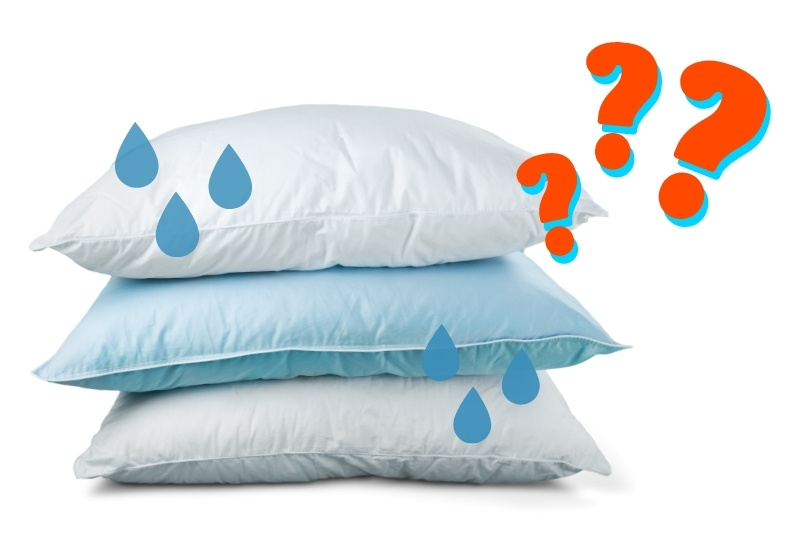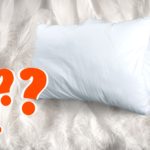Not drying a pillow properly after it’s been washed can lead to all manner of problems, from mould setting up home in the pillow to stale odours permeating out of the material.
If it isn’t dried properly, a pillow can turn into something lumpy and bumpy, instead of being smooth and comfy!
So, if you don’t want to spend time fighting mould growth, unpleasant smells and suffering with aches and pains, you need to dry your pillow correctly.
Read on to find out how to dry pillows.
And remember: a pillow must be completely dry before it is covered and put back into use.
How to Dry Pillows
When it comes to drying pillows, you need to follow what it says on the tag first and foremost, and then you can proceed to drying the pillows either in a machine or naturally.
Follow these steps to dry your pillows.
Step 1: Check the care label
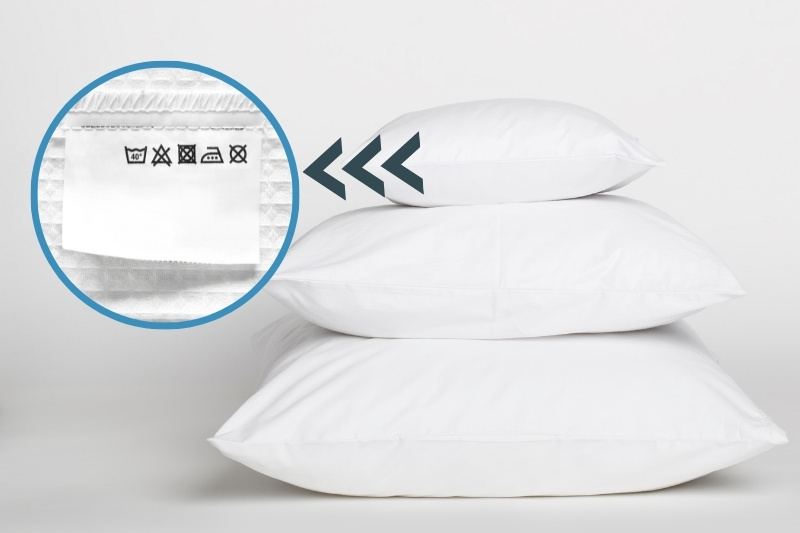
Before you washed your pillows, you should’ve checked the care labels on the pillows to see what material they were made from, and how to wash them.
So, before you dry your pillows, you need to go back and check the same tags to see how to dry the wet pillows in question. You’ll either be able to tumble dry the pillows or you’ll have to air dry them.
In general, most cotton, feather, down and synthetic pillows can go in a dryer. But latex, silk and memory foam pillows cannot go in a tumble dryer and must be air dried!
Step 2a: Tumble dry
If your pillows can be dried in a tumble dryer, place them in the dryer and add some one or two dryer balls to the drum.
The dryer balls will help fluff up the pillows and to stop them from clumping during the drying process. Clean tennis balls also work if you don’t have any dryer balls.
You should avoid overloading the dryer because your pillows will expand as they dry, so they’ll need more room.
You’ll then need to start an hour-long cycle that uses a low heat setting.
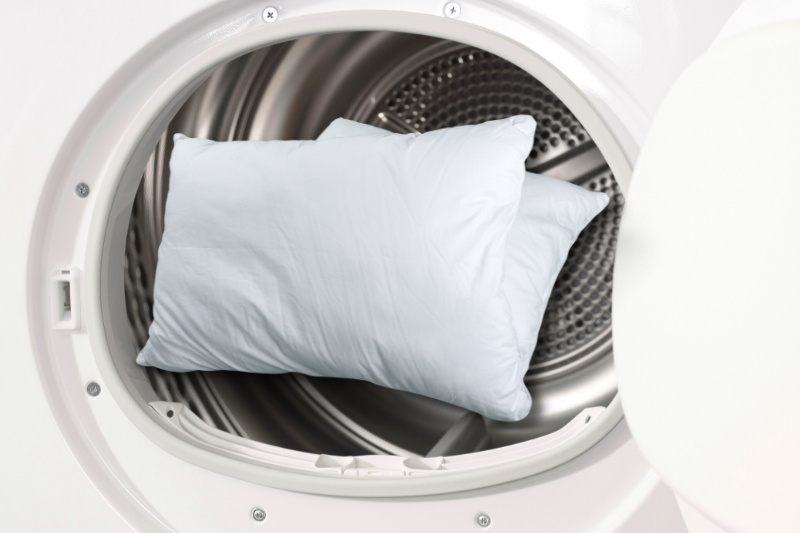
Roughly every 20 minutes, you should pause the machine, remove the pillows and shake and knead them slightly before putting them back and starting the machine again.
Kneading removes any chunkiness from the pillows that the dryer balls have missed. If you don’t do this, your pillows won’t go back to their original shape and they’ll be so uncomfortable to sleep on.
Once the hour has passed, take the pillows out, leave them to cool down and then check them for moisture and dampness. Heat can mask the moisture trapped inside the pillow’s fibres, so make sure they are fully dry.
If the pillows still feel wet, you’ll need to continue the process outlined above until the pillows are 100% dry. Some materials take slightly longer than others to dry, so be patient.
When you think the pillows are dry, allow them to go cold, then squeeze them tightly and sniff them.
If you don’t feel any moisture and you can’t smell anything on the pillows (bar the detergent you’ve used), the pillows are dry.
Tip: You shouldn’t cover up or sleep on wet pillows as this encourages mould growth, and it’s also very uncomfortable.
Step 2b: Air dry
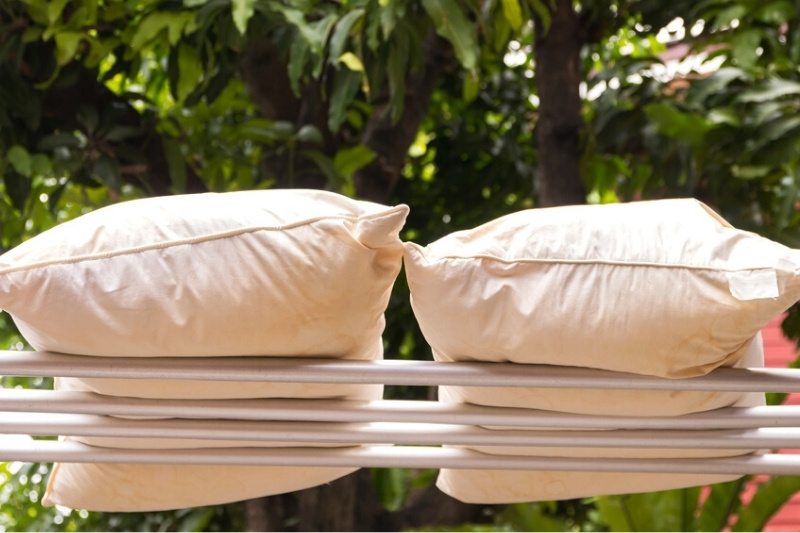
If the care label says “Do not tumble dry”, or you don’t have a tumble dryer, you should air dry them instead.
First, lie the pillow flat on a towel. Then place another towel on top of the pillow. You can then start to press down gently on the top towel to remove extra moisture from the pillow.
Once you’ve done that, start to fluff the pillow up. After fluffing the pillow, you can either place the pillow outside, pop it near a window where there is plenty of sunlight coming in, or pop it on the line to dry.
While it’s drying, you should knead the pillow regularly—every 40 minutes or so. This will help it keep its shape and prevent it from going clumpy.
If you’ve hung the pillow on the line, turn the pillow around each time you knead it, so it hangs by a different pair of corners each time. Repeat this entire process for every pillow you have washed.
Ideally, do this exercise on a sunny day when there is a breeze, so the heat and the air can work their way into the fibres and dry the pillow properly.
If you’re drying your pillow inside and near a window, try setting up a fan near the pillow to create some artificial airflow.
The process above may take some time, so be patient.
How Do You Keep Pillows Fresh?

Here are some ideas for keeping your pillows cleaner for longer:
- Make a habit of cleaning your pillows regularly. This will keep them free from stains, dust, mites and sweat.
- Pop a pillow protector on your pillow.
- Fluff and shake your pillows daily to keep them in shape and make sure they’re comfy to lie on.
- Put your pillow outside on a monthly basis to air it.
- Always make sure your pillows are thoroughly dry before you cover them with pillowcases.
- Spot treat stains as and when you need to.
- If someone tips liquid over the pillow, make sure you dry it properly before you use it again.
- Don’t sleep on a wet pillow.
- Don’t wash and dry pillows with other washable items in your home. Doing so could damage and warp your pillows.
How Do You Fluff Pillows in the Dryer with Tennis Balls?
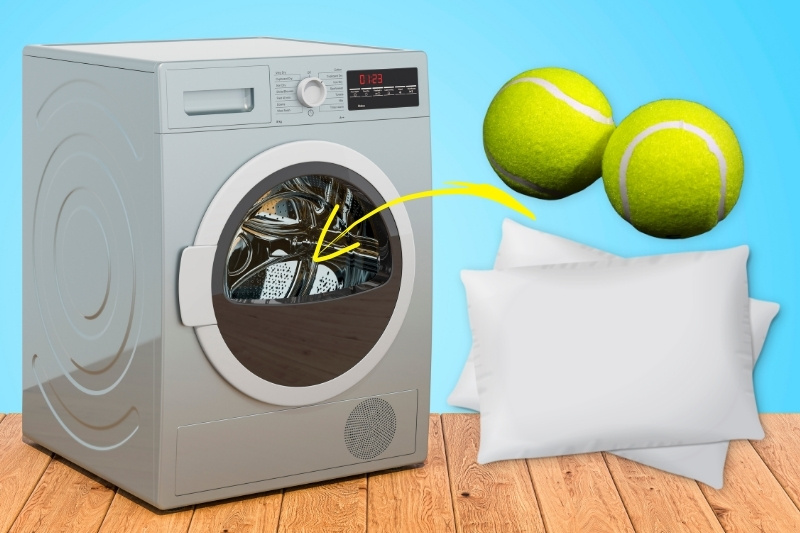
To use a couple of tennis balls to fluff up your pillows, simply add two freshly washed pillows to your tumble dryer, then add two clean tennis balls to the machine.
Start a low temperature, hour-long cycle. You’ll have to pause the cycle every few minutes, so you can pull out and manually fluff the pillows with your hands (just to make sure there’s no clumpiness at all).
When the cycle ends, remove your pillows and give them an additional gentle shake to fluff them again and check they’re actually dry.
How Do You Wash Pillows?
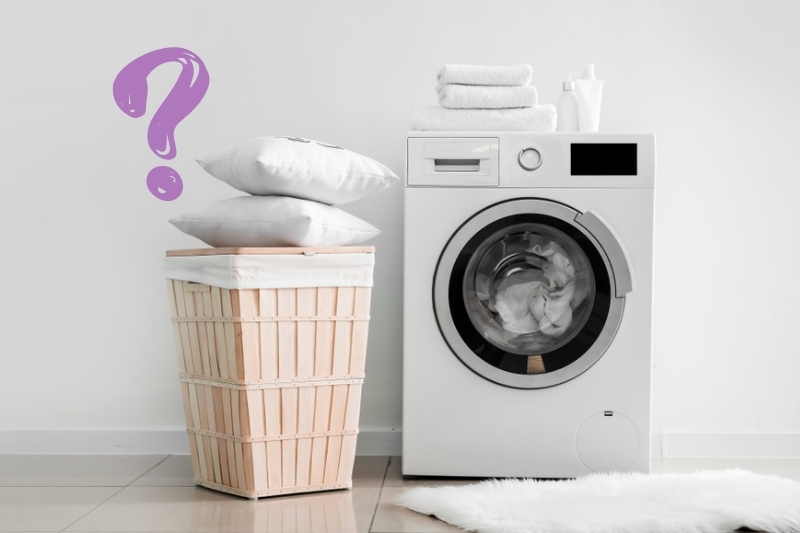
Before you wash your pillows, find out what they are made from by reading the tag.
For example, your pillows could be made of cotton, feather, or synthetics. After this, you can wash the pillows as per the instructions on the care label.
Cotton and synthetic pillows can typically be washed in a washing machine. But see the label for exact instructions on the water temperature.
Foam pillows, on the other hand, usually don’t need to be washed, and any treatments need to be done by hand as the material is more delicate in nature.
In this case you’ll need to hoover the pillow, and start blotting the pillow with a warm cloth that’s been dipped in some mild detergent. See our guide to washing memory foam pillows for step-by-step instructions.
There’s some debate on whether or not you should actually wash feather pillows, and in some cases, it’s advised not to clean these pillows with any kind of detergent. If you are going to wash your feather pillows, you do so at your own risk. Follow the steps outlined in our guide to washing feather pillows.
When Should You Replace a Pillow?
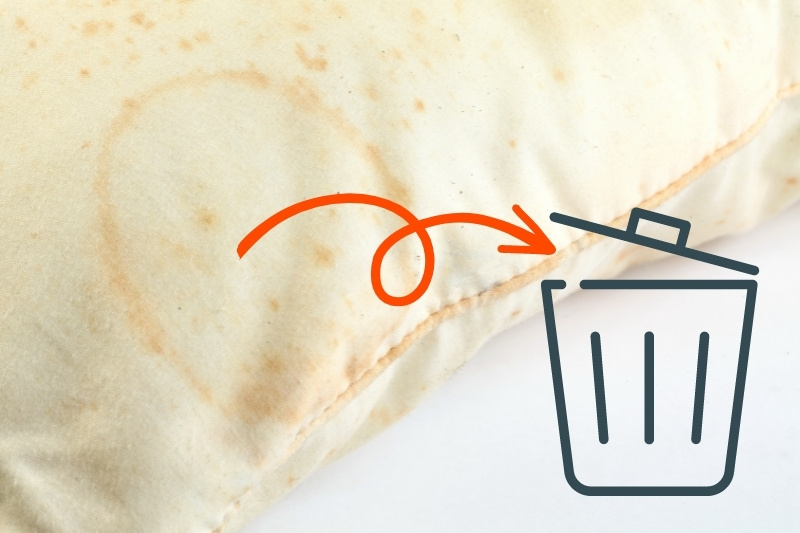
A sure sign that it’s time to replace your pillow is when you’ve cleaned it but the pillow is still caked in dirt. If you can still see sweat traces on the material, it’s going yellow or black, and it doesn’t smell too good, it’s time to bin the pillow.
Alternatively, if you bend your pillow in half and it springs back into shape, you’ll know that your pillow still has a bit of life in it.

Bethan has a passion for exploring, reading, cooking and gardening! When she’s not creating culinary delights for her family, she’s concocting potions to keep her house clean!
